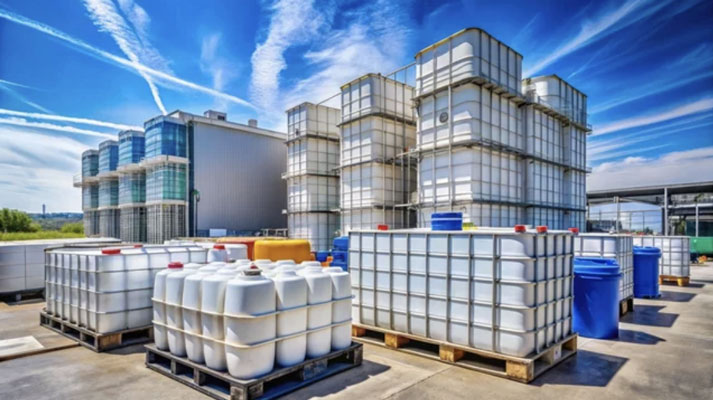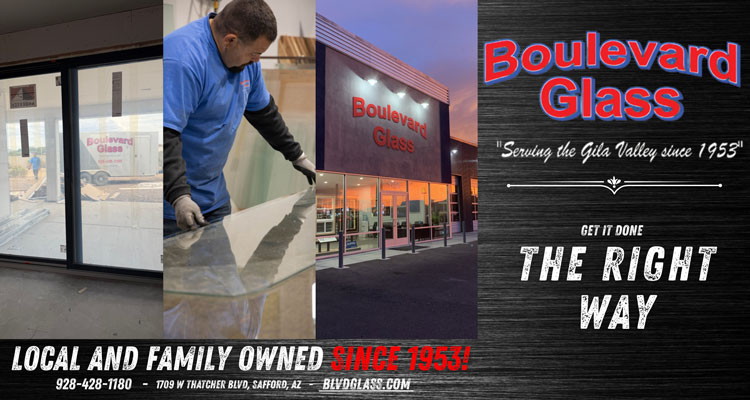IBC totes are important containers used in many industries. They hold 275 to 330 gallons of liquids, chemicals, and bulk materials. Despite their sturdy construction, people often make mistakes when transporting them. Their strong durability has created a secondary market. You can find used IBC totes for much cheaper than new ones.
Proper handling of these containers prevents accidents. It saves you from using products incorrectly. It protects the environment. Plus, it helps you follow government rules. Even with strong construction, anything can break with enough effort and mistakes.
My experience is that even small but systemic errors can lead to serious problems later on. Most of these problems can be prevented with the right approach. Knowing what often goes wrong helps us find safer ways to move valuable containers from A to B.
The goal is clear: make sure transport operations keep your products and people safe. Following proper procedures saves time, money, and headaches in the long run.
Physical Handling Mistakes
Forklift Operation Errors
One common mistake in IBC transportation is improper forklift operation.
Puncturing the tote with a forklift is a particularly dangerous mistake. A 275-gallon tote can weigh more than 1,000 pounds. This makes precision and control very important. If the container and lift aren’t aligned, the forks can pierce the container. Operators should keep the forklift and container aligned. The lift should lower on either side of the tote pallet. Using totes that allow four-way forklift entry lets you pick them up from any side. This cuts down on the risk of punctures.
Forklifts cause about 17% of all IBC leak incidents by puncturing them. This makes it the third most common reason for containment loss. Organizations must always heed the “No Forks This Side” decals on IBCs. They should never enter or lift from the restricted side with a forklift. Operators should fully engage the forks under the bottom of the IBC. If the IBC has fork tube channels, use those instead.
Another common mistake occurs when the forks don’t extend fully through the pallet. This keeps it from being stable. Before moving, operators should lift the container a few feet to verify it’s secure and not slipping. Experts say, “IBC incidents usually happen when people mishandle or mistreat IBCs.” They rarely occur due to mechanical or structural failure.
Improper Securing Techniques
Not securing IBC totes properly during transport is a common mistake. It can lead to serious problems. If IBCs aren’t secured well, they can move during transport. Before moving a loaded IBC, operators should:
- Lift the container a few feet off the ground to verify it’s secure and not slipping
- Move the forklift slowly during transport
- Ensure the pathway remains clean and flat, avoiding gravel, rocks, or uneven surfaces
Start with a complete visual check of the IBC container. Look for cracks, punctures, or bulges before moving it. GenieGrips® Mats and Caps are specialized tools. They cover forklift tyne tips with a soft surface. This helps prevent punctures to the IBC. It also stops the IBC from sliding off bare metal tynes during sudden stops.
Transportation Planning Errors
Poor Load Configuration
Improper planning for transportation frequently leads to preventable incidents. Bad stacking in trucks and loose loads are common causes of IBC damage during transit. Improperly stacked or secured IBCs can shift during transport. This movement may cause collisions with other vehicles or vehicle walls.
IBC incident analysis reveals that about 13% happen during receipt at goods inwards. This shows how crucial load planning and configuration are before transit starts. Also, 18% of incidents occur while items are stored in warehouses. This often happens because of bad stacking or placement choices made during transport.
Not choosing the right shipping methods for certain materials is another planning mistake. Different materials need different handling. For example, flammable liquids need special shipping rules. Non-flammable substances don’t. Transportation planning should account for material type, distance traveled, and delivery timeframes.
Vehicle Operation Issues
Even properly secured loads can be compromised by poor driving practices or accidents. Truck collisions with IBCs can damage the containers. This can lead to leaks inside the truck, on roads, and in drainage systems. These incidents show why we need thorough transportation planning. This planning should cover driver training and emergency response steps.
About 21% of IBC incidents happen when forklifts move around sites. This shows why planning routes and managing traffic in facilities is important. Clear pathways, set routes, and slow speed zones lower accident risks in IBC transport.
Warehouse Management Mistakes
Stacking and Storage Errors
In warehouse environments, improper stacking represents a significant risk factor. Poor stacking techniques can cause IBCs at the top of a stack to fall onto other containers or the floor. Common stacking mistakes include:
- Exceeding recommended weight limits and height restrictions
- Disregarding recommended stacking patterns
- Failing to provide adequate ventilation and temperature control
- Allowing IBCs to protrude into forklift operation areas
When IBCs stick out where forklifts work, they can get hit. This can damage the protruding container. It may also snag on warehouse racking. This could lead to structural failure, especially in tall, narrow aisles. Forklift collisions with racking make up about 5% of all IBC incidents.
Looking to boost safety in your storage areas? Double IBC spill pallets with 4-way forklift entry work really well for this purpose. They come with containment sumps that catch any leaks or spills before they become a problem. These particular spill pallets can hold about 304 gallons in their sump. They’re sturdy enough to support up to 5,500 pounds without issues. Makes them perfect for warehouses where you need to store multiple IBCs safely.
Space Management Issues
You can stack 275-gallon totes if their stacking test load rating allows it. Good planning means knowing the capacity ratings for each container type. You must also make sure not to exceed these limits.
Stacking two IBCs in one warehouse bay is risky. Incident data shows this has led to several reported incidents. Storing IBCs too high in the warehouse is another common mistake. It leads to about 8% of operational errors in IBC handling.
Different IBC types require specific handling considerations. Stainless IBCs can connect directly to the forklift. They also have lifting legs for easy positioning. In contrast, poly tanks need a sturdy pallet for safe handling.
Regulatory Compliance Mistakes
Documentation and Labeling Errors
One of the most common regulatory mistakes involves improper labeling. Removing labels is a big problem. They show what was in the tote. Labels are important for safe handling, transport, and following rules. Keep original labels as they are. For totes that had hazardous substances, give truck drivers the right placards.
Wrong labeling of waste materials, by-products, or intermediate products can cause storage issues. This may lead to dangerous chemical reactions. Modern labeling solutions feature automatic print and apply GHS labeling systems. These systems work for IBC containers and can be set up on production lines. They help ensure labeling is both consistent and compliant.
Analysis shows that missing or wrong labels cause about 7% of errors in IBC handling. Strong labeling protocols are crucial in any IBC management system.
Inspection and Testing Oversights
Failing to adhere to testing requirements represents another frequent regulatory compliance mistake. UN/DOT rules say IBCs for liquids must have regular tests and inspections:
- Leakproofness testing every 2.5 years (30 months)
- External visual inspection every 2.5 years
- Internal inspection every 5 years
The leakproofness test checks for leaks by pressurizing the IBC to 2.9 PSIG (21 kPa). Then, the pressure is held for a while. All seams and joints are covered with a solution, usually soap, to spot any leaks easily. During external inspections, officials check that the IBC is properly marked. They also ensure all service equipment is present and functional. Finally, they look for cracks, warping, corrosion, and any other damage.
These requirements still apply when using UN standard IBCs for non-hazardous materials. An expert says, “If you use UN Standard packaging for non-HazMat, it must meet all UN requirements. This includes retesting and reinspection. Using packaging that falsely claims to meet UN standards is a regulatory violation. Organizations using IBCs for non-hazardous materials can skip these rules. They can do this by using containers without the UN Standard mark. They can also cover, remove, or hide the mark before transport.
RCRA Emptiness Requirements
A common mistake is failing to meet RCRA emptiness standards before transport. For an IBC to be considered RCRA empty, it’s got to meet certain requirements:
- Get rid of all waste using common methods for that container type. You can pour, pump, or aspirate it out.
- Only one inch of residue should stay at the bottom of the container. This is about 7 gallons in a composite IBC bottle.
- Alternatively, no more than 0.3% of the total container weight can remain. This is about 0.825 gallons or roughly 3 quarts for liquids that have the same density as water.
An IBC with a valve must be emptied. This way, no liquid will come out when the valve is fully open. Not following these rules might make the tote considered hazardous waste.
Personnel-Related Mistakes
Training Deficiencies
Insufficient training for personnel involved in IBC handling operations significantly increases accident risks.
Trained staff must know:
- weight limits
- stacking rules
- forklift best practices
- compliance requirements
Without adequate training, even well-designed systems can fail.
A comprehensive training program should cover:
- Proper forklift operation techniques specific to IBC handling
- Visual inspection procedures for identifying damaged containers
- Regulatory requirements for testing, inspecting, and documenting IBCs
- Emergency response procedures for leaks and spills
- Proper maintenance practices to extend IBC lifespan
Implementing a regular maintenance program is crucial for IBC longevity. Make sure to meet inspection requirements. Use professional cleaning services if needed. Also, be careful when moving or lifting IBCs. Professional tote cleaners often use high-pressure, omni-directional spinner heads. These tools clean and sanitize containers well. This is crucial when dealing with hazardous materials.
Operational Errors
Specific operational errors documented in IBC handling include:
- Mistakes in math can happen when figuring out ullage volume, which is the space for expansion. They can also occur if you miss a product’s specific gravity.
- Not securing valves can lead to serious safety hazards. This may cause leaks or spills during transportation.
- Filling containers with hot materials is the first step. Next, cap them tightly. Then, let them cool down. This cooling may cause them to implode.
- Leaks during filling operations (accounting for approximately 20% of all containment loss incidents)
- Uncontrolled polymerization reactions inside IBCs (accounting for approximately 10% of leak incidents)
IBC loss of containment incidents show that about 35% are due to container leaks.
Common operational errors include:
- Storing IBCs in the wrong facility areas (5% of incidents)
- Receiving incorrect chemicals (3%)
- Using the wrong containers for certain substances (1%)












